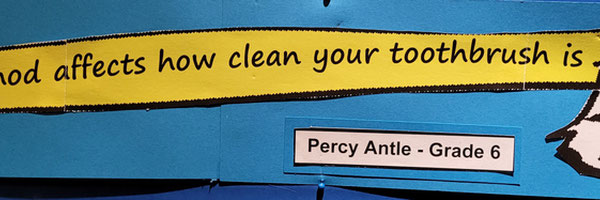What's on my toothbrush? The science of bacteria colonies gathering on a toothbrush
Grade 6
Presentation
No video provided
Hypothesis
Storage conditions will affect trhe cleanliness of my toothbrush. I hypothesize that the UV light will kill bacteria, and therefore, be the cleanest toothbrush.
Research
Background
- Uncared for toothbrushes can host bacteria (1)
- Bacteria will cause damage to enamel and cause cavities (2)
- A clean toothbrush should be safer to use by not adding extra bacteria to your mouth
- There are many ways to store a toothbrush including but not limited to,
- In the drawer
- In a stand
- On the counter
- In a UV LED sterilizer
Bad bacteria live in your mouth, and will form groups with other bacteria, which will lead to them forming plaque and acid. The bacteria feed off of the sugar in foods you put in your mouth, which will make them produce acid, breaking down the surface of your teeth and forming cavities eventually. (3)
Microorganisms in your mouth include, Streptococcus, Eubacteria, Fusobacterium, Capnocytophaga, Staphylococcus, Eikenella, Porphyromona. These bacteria will eventually develop cavities in your mouth, which can also cause plaque buildup. (4)
Gingivitis is an inflammation of the gums. When plaque is not cared for, it will lead to gingivitis, and when your gums get infected you can get periodontal disease, which leads to tooth loss. (5)
Variables
Independent:
How I store my toothbrush(Uv Led, Upright, Counter-top, drawer)
Dependent:
The amount of bacteria colonies on the agar plate
Controlled:
Time and temperature in the incubator, amount of liquid put on plates, amount of liquid used to extract bacteria, time taken to extract bacteria, time to brush teeth, technique to brushing teeth, same room brushing teeth. Everything else was controlled if it was controllable, but not everything can be perfect.
Procedure
Materials:
- 4 identical Colgate toothbrushes
- Crest toothpaste
- UVC Led sterilizer
- Upright stand
- Incubator
- Pre-poured agar plates
- Thermometer
- 50ml of sterile 0.9% sodium chloride
- 15ml high-clarity polpropelene conical tubes
- 0.45 micro meter sterile filter
- Pipetter
Method 1 - Using toothbrush
- Using a new toothbrush for each storage method, brush teeth normally for two minutes, twice a day, for five days
- Put toothbrush in appropriate storage condition between use
- Drawer on week 1
- Counter on week 2
- Stand on week 3
- UV LED sterilizer on week 4

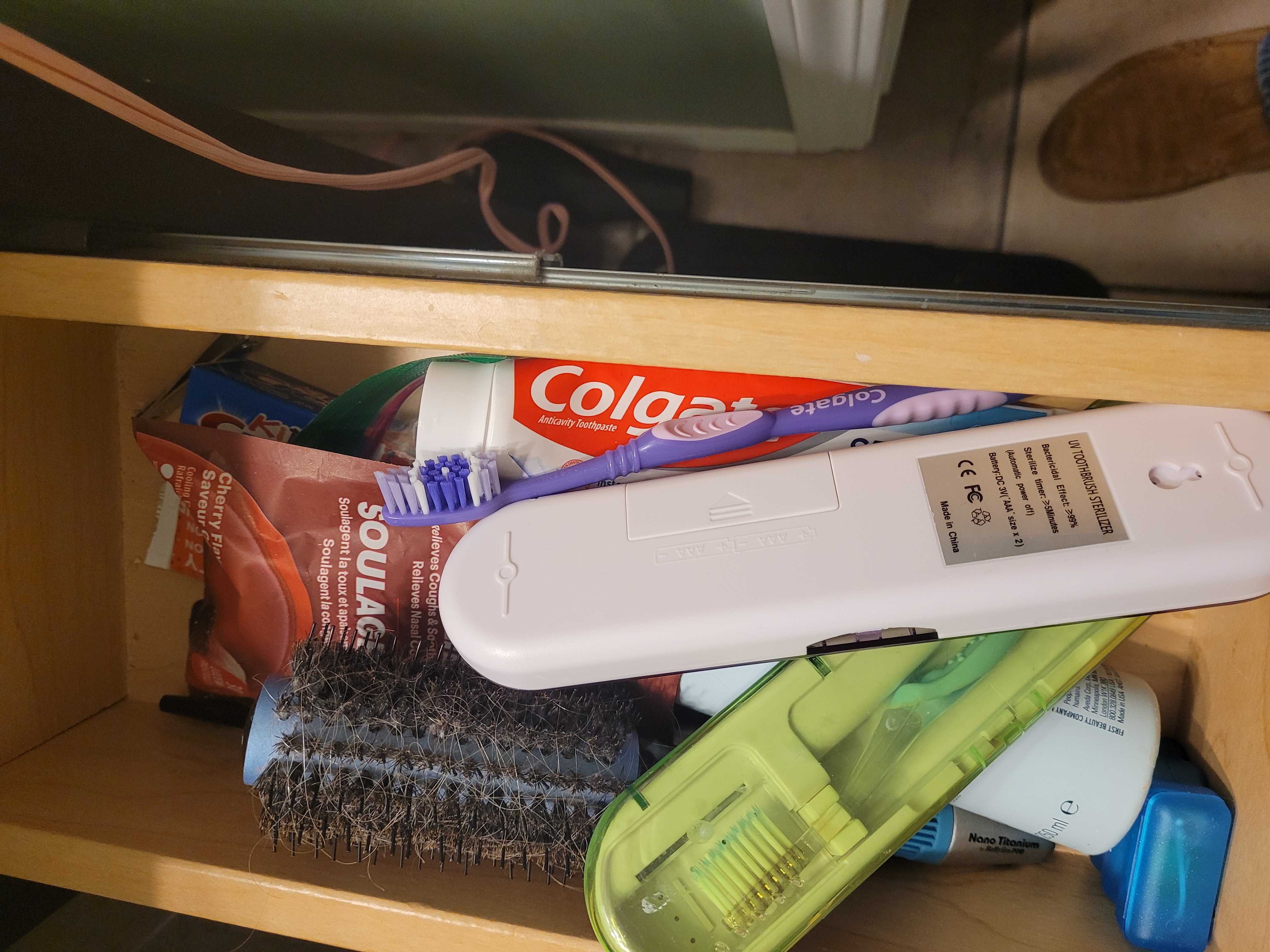
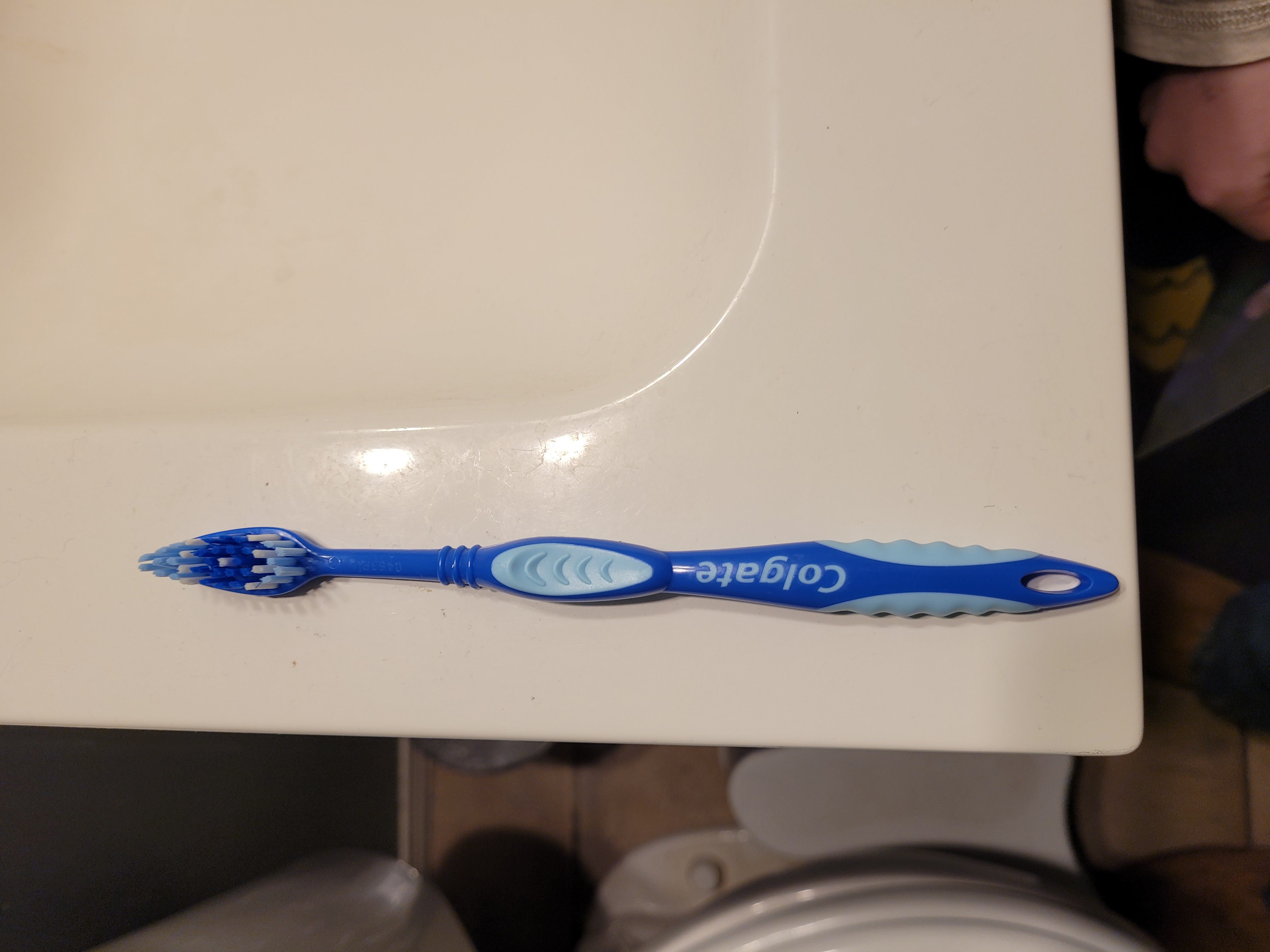
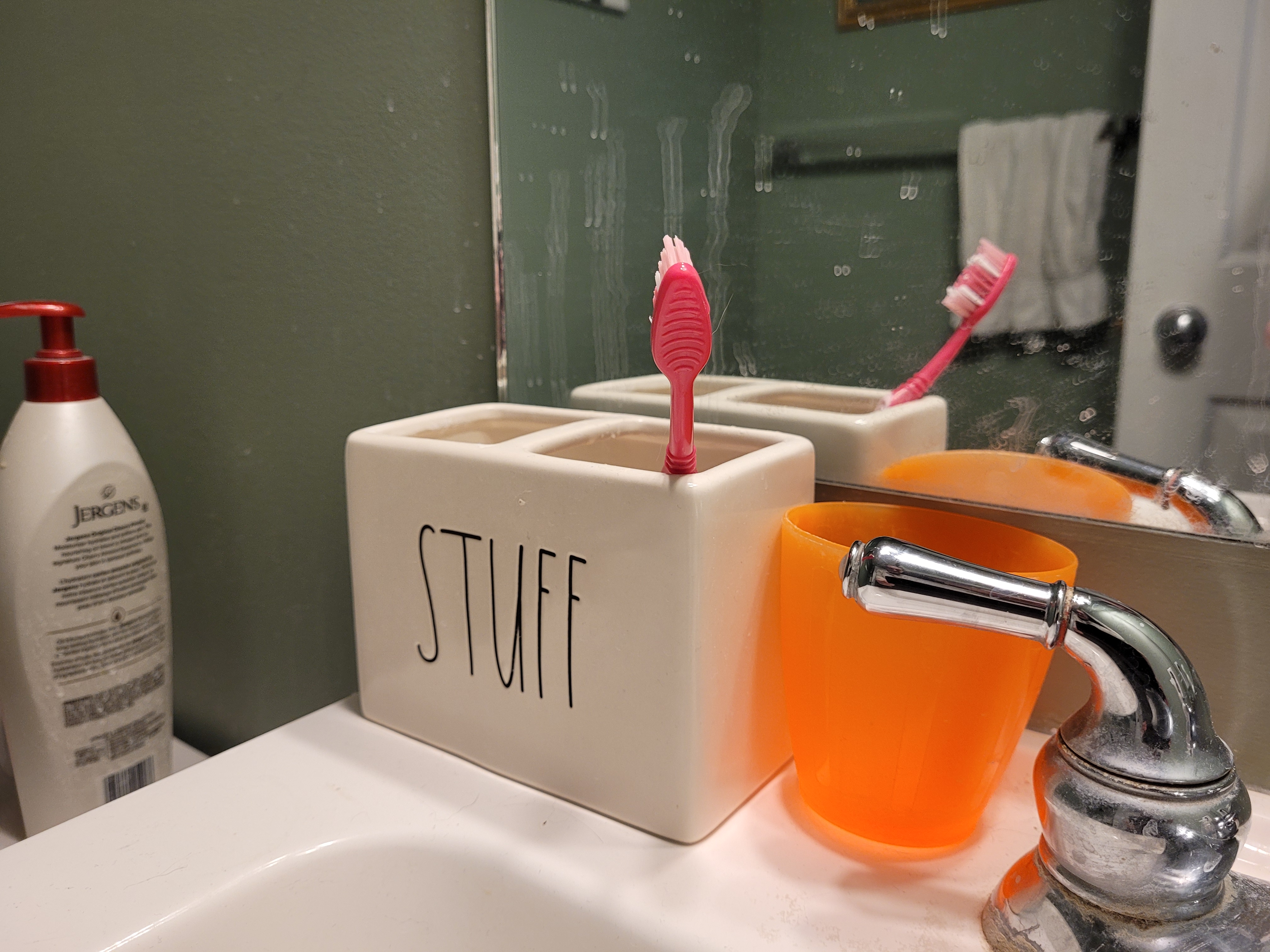
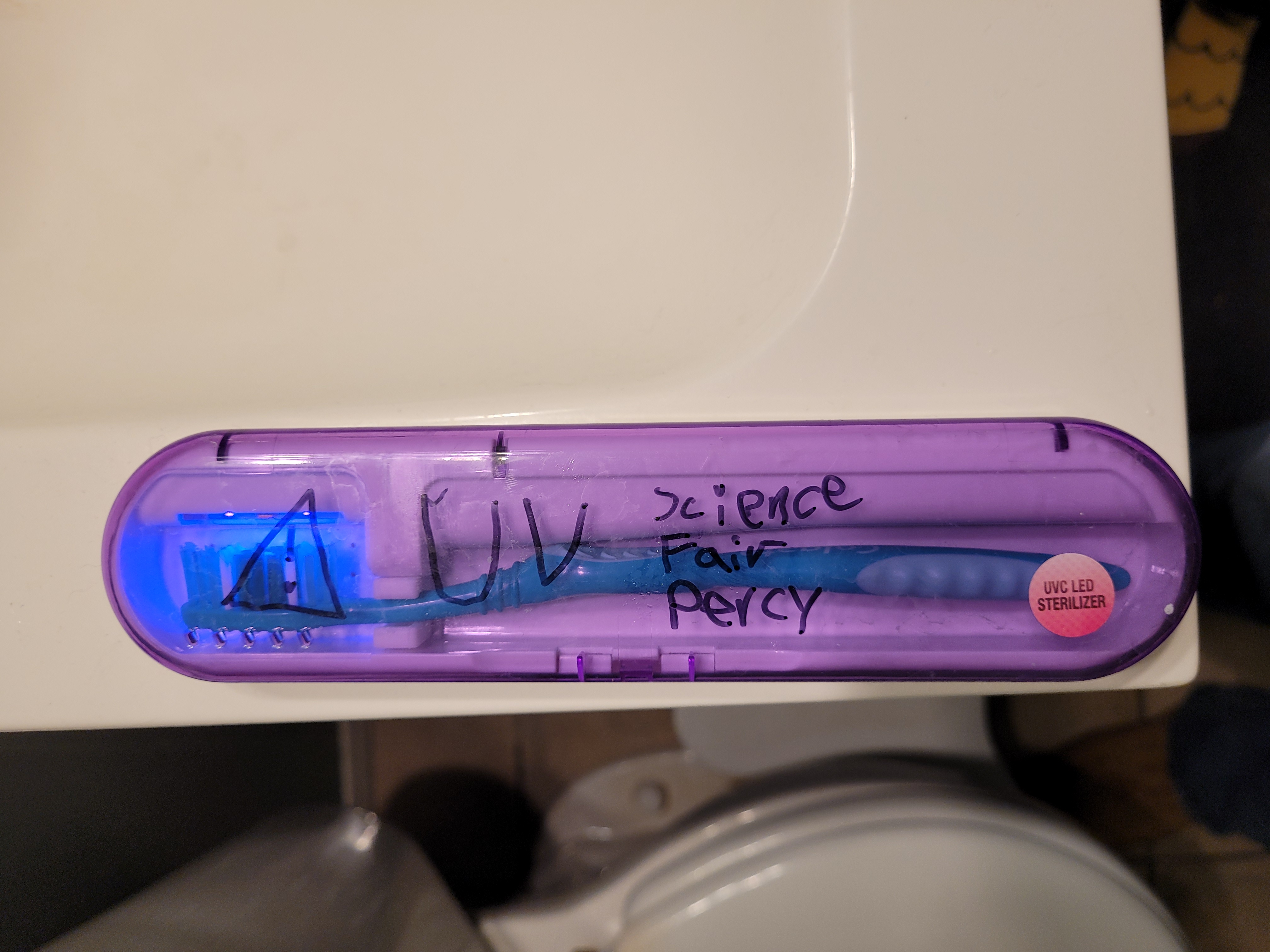
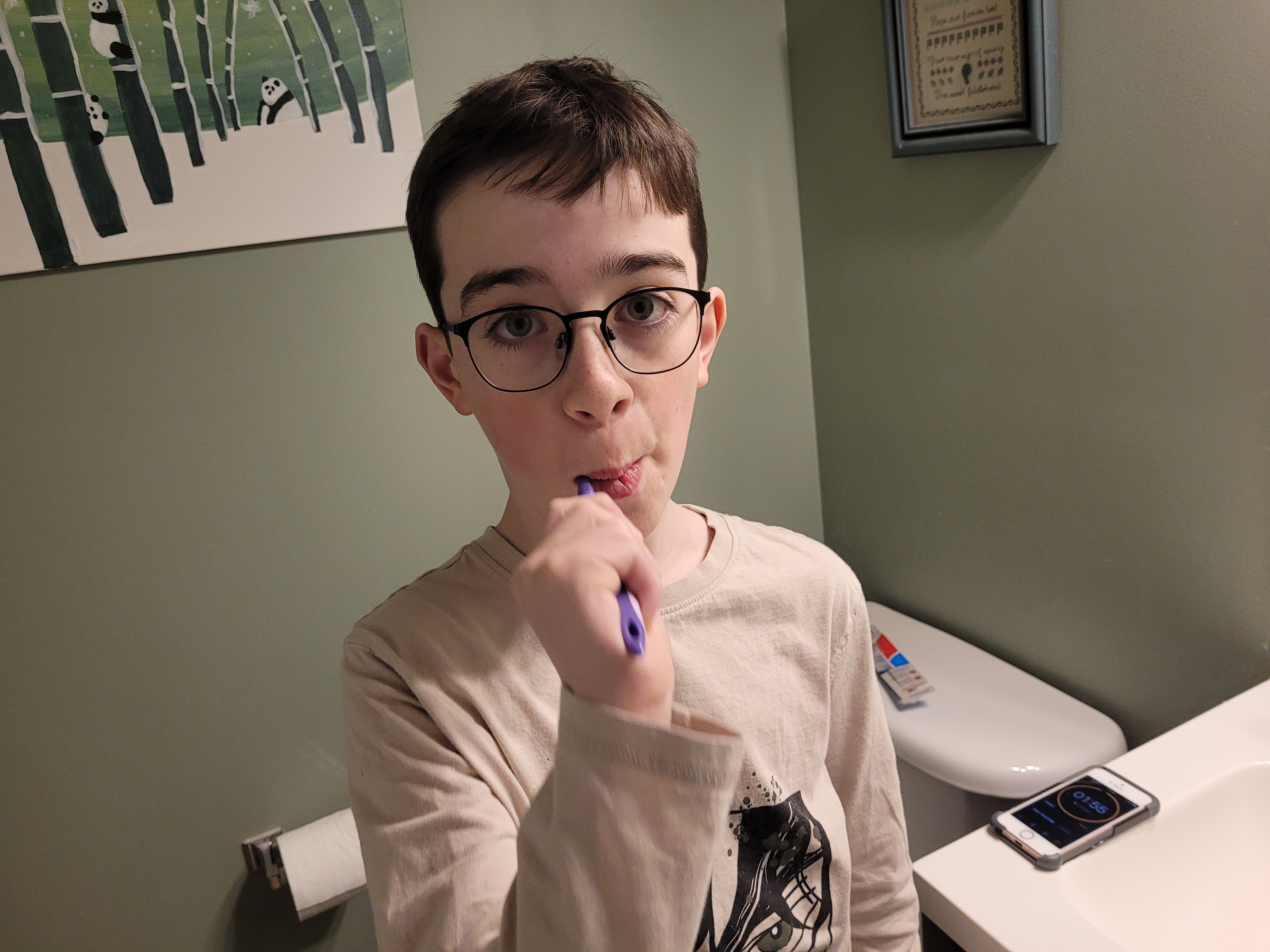
Method 2 - Culturing Bacteria
- Put gloves and mask on
- Label agar plates
- Use a sterile pipettor to get 100ul of sterile saline
- Drop on to agar plate on control plate, spread with sterile spreading wand.
- Put used toothbrush in 15ml sterile saline tube for five minutes, mix occasionally
- Put 100ul of this mixture on each of 2 plates and spread with spreading wand
- Put all plates in incubator at 37℃ for 2 days
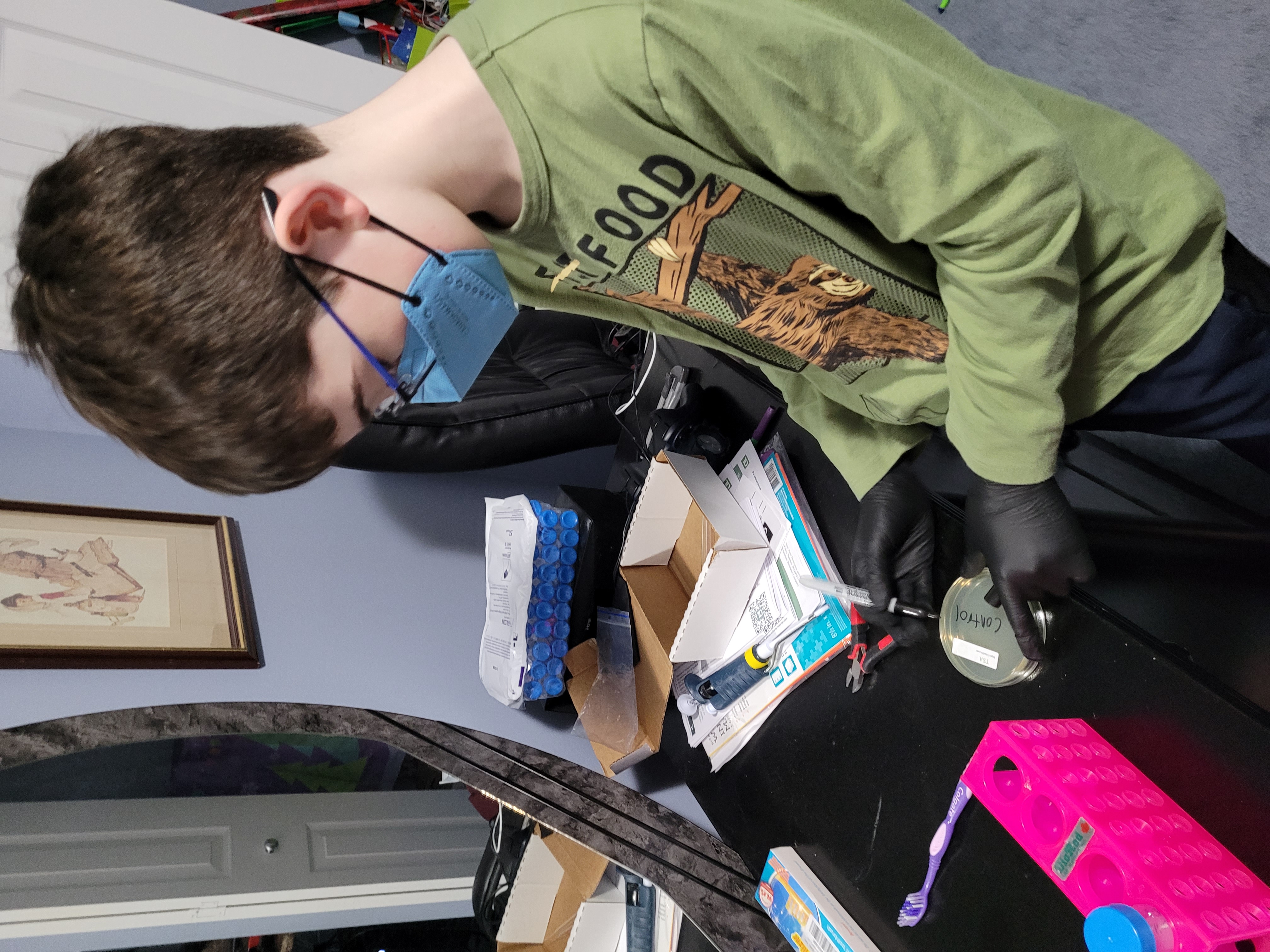
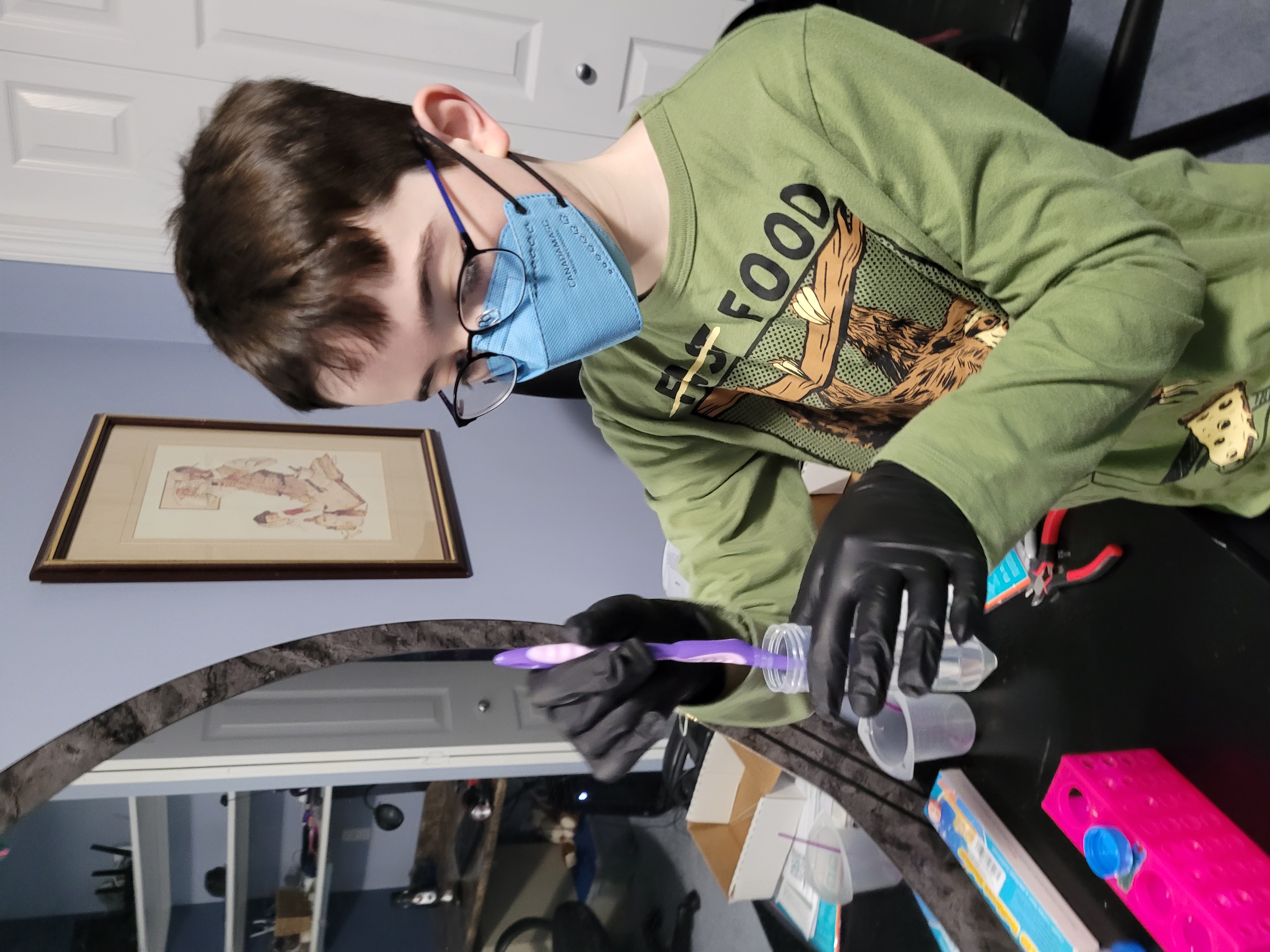
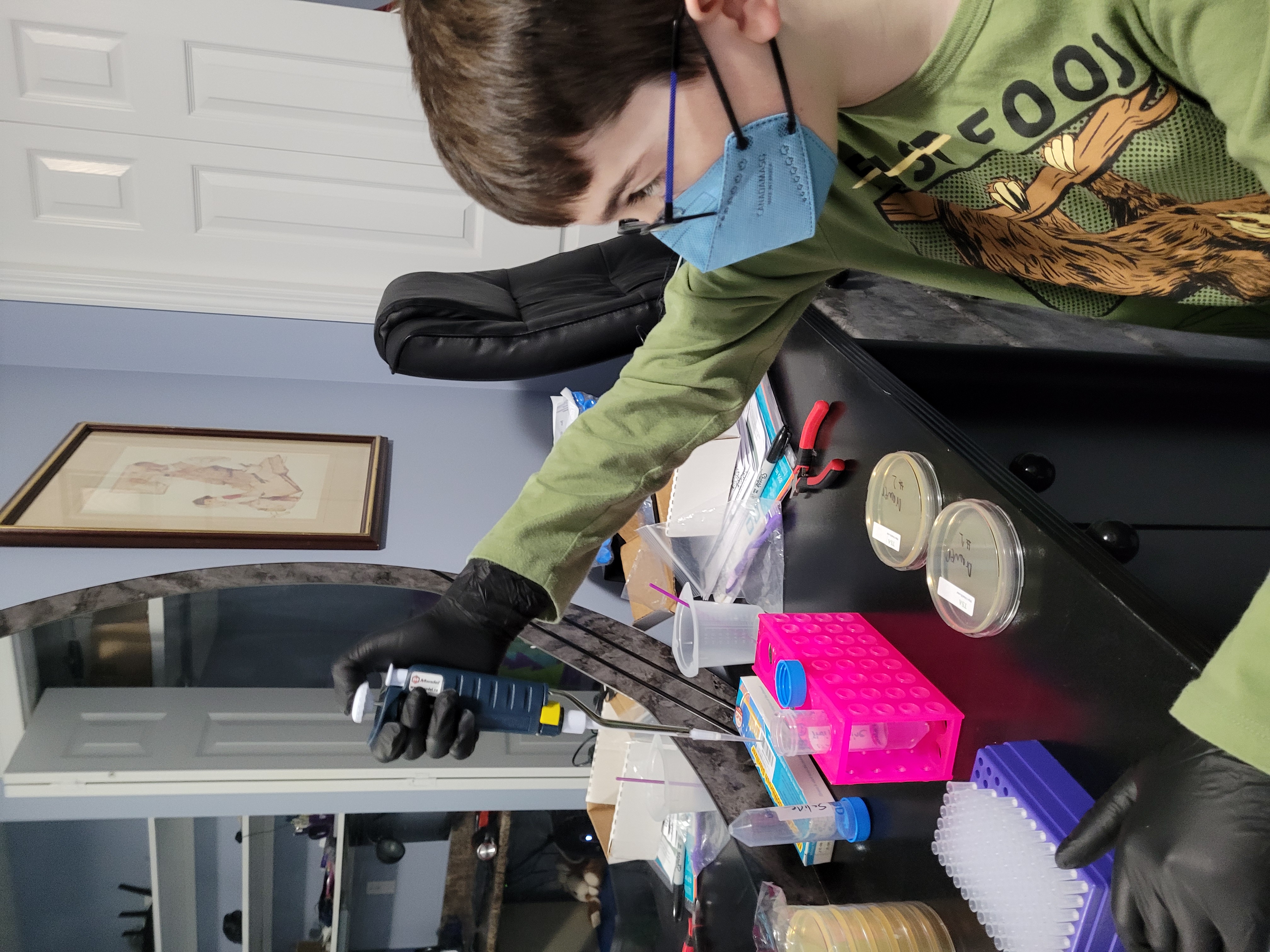
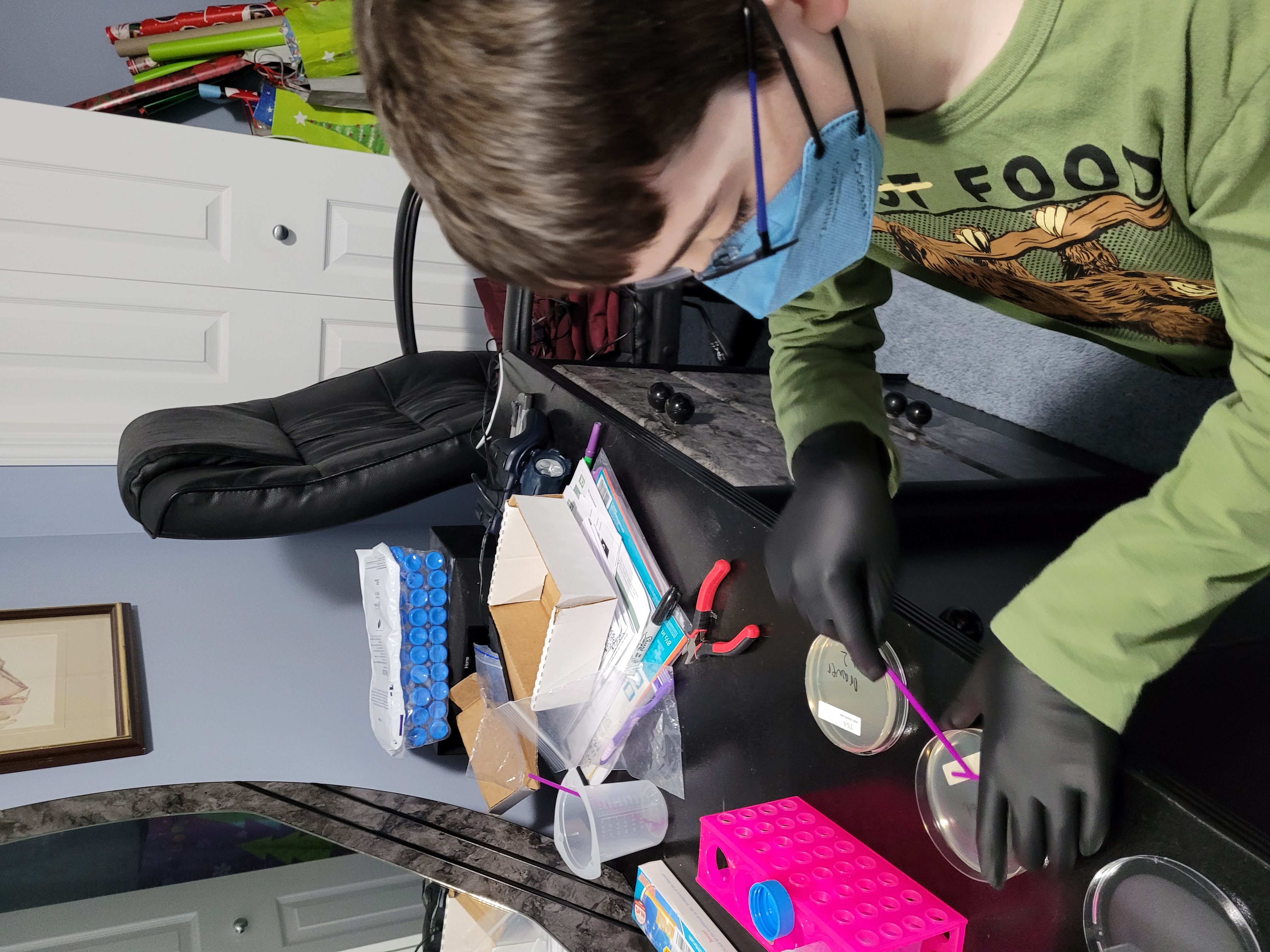
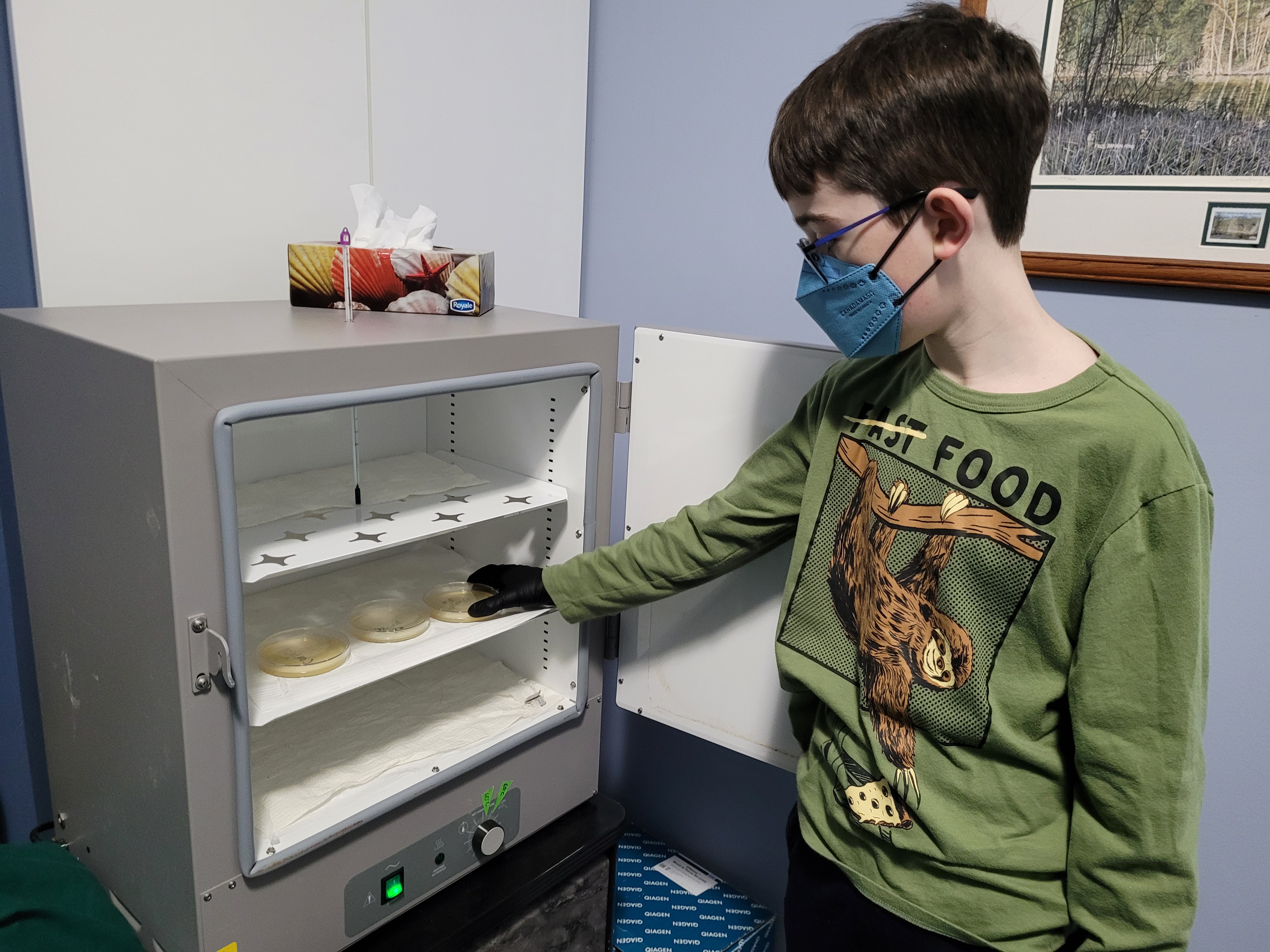
Method 3 - Counting Bacteria Colonies
- Take plates out, take pictures
- Download on to a computer with the software “ImageJ”
- Open the pictures in “ImageJ”
- Use the “Multi-point” tool and click on every bacteria colony
Observations
I ran my experiment twice. In each experiment I had four conditions, the four conditions are: Drawer, Counter, Stand, and UV LED sterilizer. In each run I had a control plate that had the liquid before I had put the toothbrush in, and two experimental plates for after the toothbrush was soaked in the solution, for each condition. This gave two control plates and four experimental plates for each condition. I used "ImageJ" to make my observations, and quantify my plates. Sample culture plates are included in the attached composite image. Colony counts are in the attached spreadsheet and attached graph. And a sample picture of my counting method is also attached.

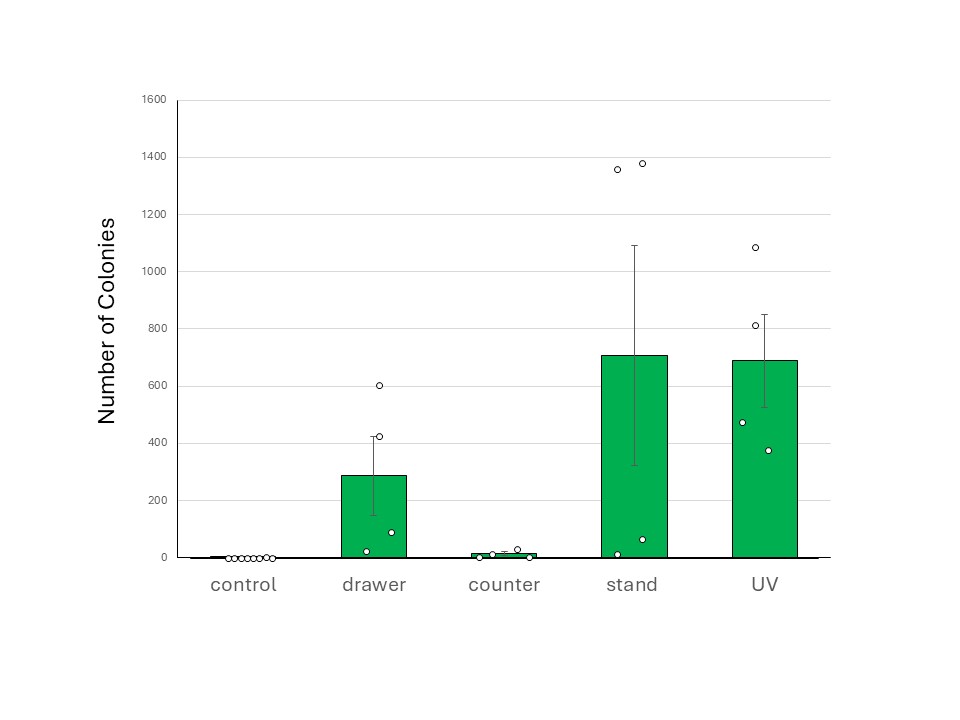
| Plate # | control | drawer | counter | stand | UV |
| 1 | 0 | 605 | 33 | 65 | 376 |
| 2 | 0 | 427 | 15 | 15 | 474 |
| 3 | 1 | 90 | 5 | 1383 | 1088 |
| 4 | 1 | 25 | 2 | 1360 | 814 |
| 5 | 0 | ||||
| 6 | 0 | ||||
| 7 | 2 | ||||
| 8 | 0 |
Analysis

Generally control plates were clean or had one colony except the counter, which got contaminated, with only white colonies, so we didn't count the white colonies in the experimental plates from the counter.
The drawer was mildly inconsistent, so another run of this test would be useful, but from what we gathered, we can infer that having it in the drawer is the 2nd cleanest strorage method.
The counter was consistent, and from the data we gathered, we can infer that it was the cleanest storage method.
The stand was extremely inconsisent, therefore another run of this experiment would be needed, from the data we gathered, one run was really low, and the other run was really high in bacteria colonies.
The UV LED sterilizer was mildly inconsistent, so another run of this test would be helpful, but from what we gathered, we can infer that having it in the UV LED sterilizer, is not a good storage method, and was quite dirty both times.
Conclusion
All plates had more bacteria than the control, but the counter was consistently cleaner than the other conditions. Maybe letting your toothbrush dry in the air, prevents bacteria growth. Maybe putting your toothbrush in an enclosed, dark, moist, humid area contributes to more bacteria.
Application
If you want a clean toothbrush, maybe store it in a place that it can airdry.Your toothbrush will be dirty, but so is everything you put in your mouth. Your toothpaste helps prevent and limit bacteria growth on your toothbrush.
Sources Of Error
I cultured the bacteria in a spare bedroom in my house, so it may be the reason why it was inconsistent.
The humidity could not be controlled in our house, so some toothbrushes may have been more moist than others.
Ate different meals all the way through, changing the amount of bacteria in my mouth.
Citations
- Marc-Kevin Zinn, Laura Schages and Dirk Bockmühl (2020) The Toothbrush Microbiome: Impact of User Age, Period of Use and Bristle Material on the Microbial Communities of Toothbrushes, Microorganisms, 8, 1379; doi:10.3390/microorganisms8091379
- American Dental Association (2013) Tackling Tooth Decay. Journal of the American Dental Association. 144(3). https://jada.ada.org/article/S0002-8177(14)60378-0/fulltext
- Colgate, “Oral Bacteria: What Lives In Your Mouth?”, Colgate.com, January 9 2023, accessed on March 13, 2024, https://www.colgate.com/en-us/oral-health/mouth-and-teeth-anatomy/oral-bacteria-what-lives-in-your-mouth
-
Sahi, Akshima, “What Microorganisms Naturally Live in the Mouth?”, New-medical.net, Sep 16, 2020, accessed on March 13, 2024, https://www.news-medical.net/health/What-Microorganisms-Naturally-Live-in-the-Mouth.aspx#:~:text=Some%20bacteria%20like%20Streptococcus%2C%20Granulicatella,are%20explicit%20to%20certain%20sites.
-
Mount Sinai, “Gingivitis”, mountsinai.org, January 24, 2022, accessed on March 13, 2024, https://www.mountsinai.org/health-library/diseases-conditions/gingivitis#:~:text=Gingivitis%20is%20inflammation%20of%20the,bone%20that%20support%20the%20teeth.
Acknowledgement
I thank my dad for getting me supplies, lending me his lab equipment, and showing me how to perform my procedure.
I also thank my mom for getting the agar plates for me to use.

